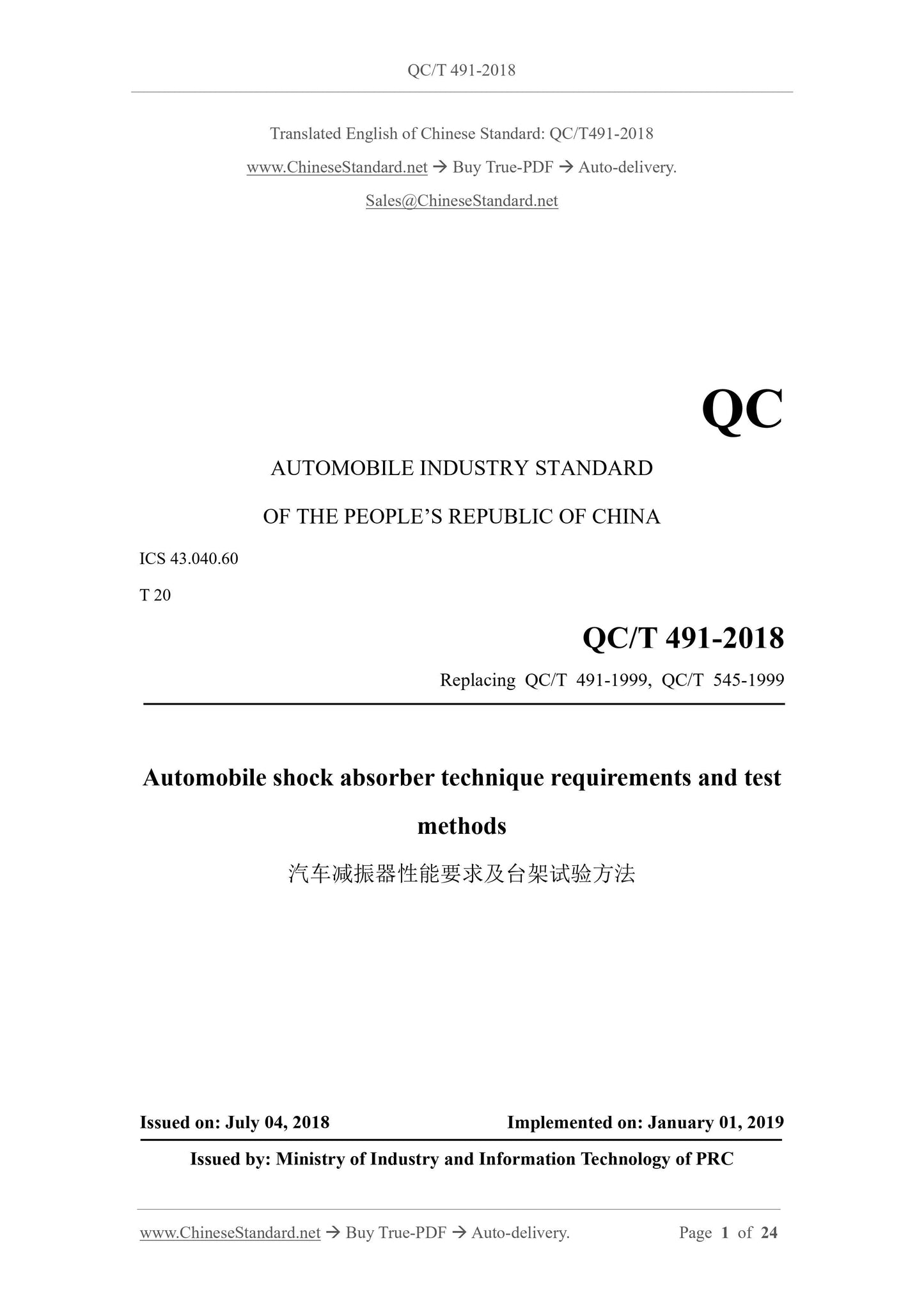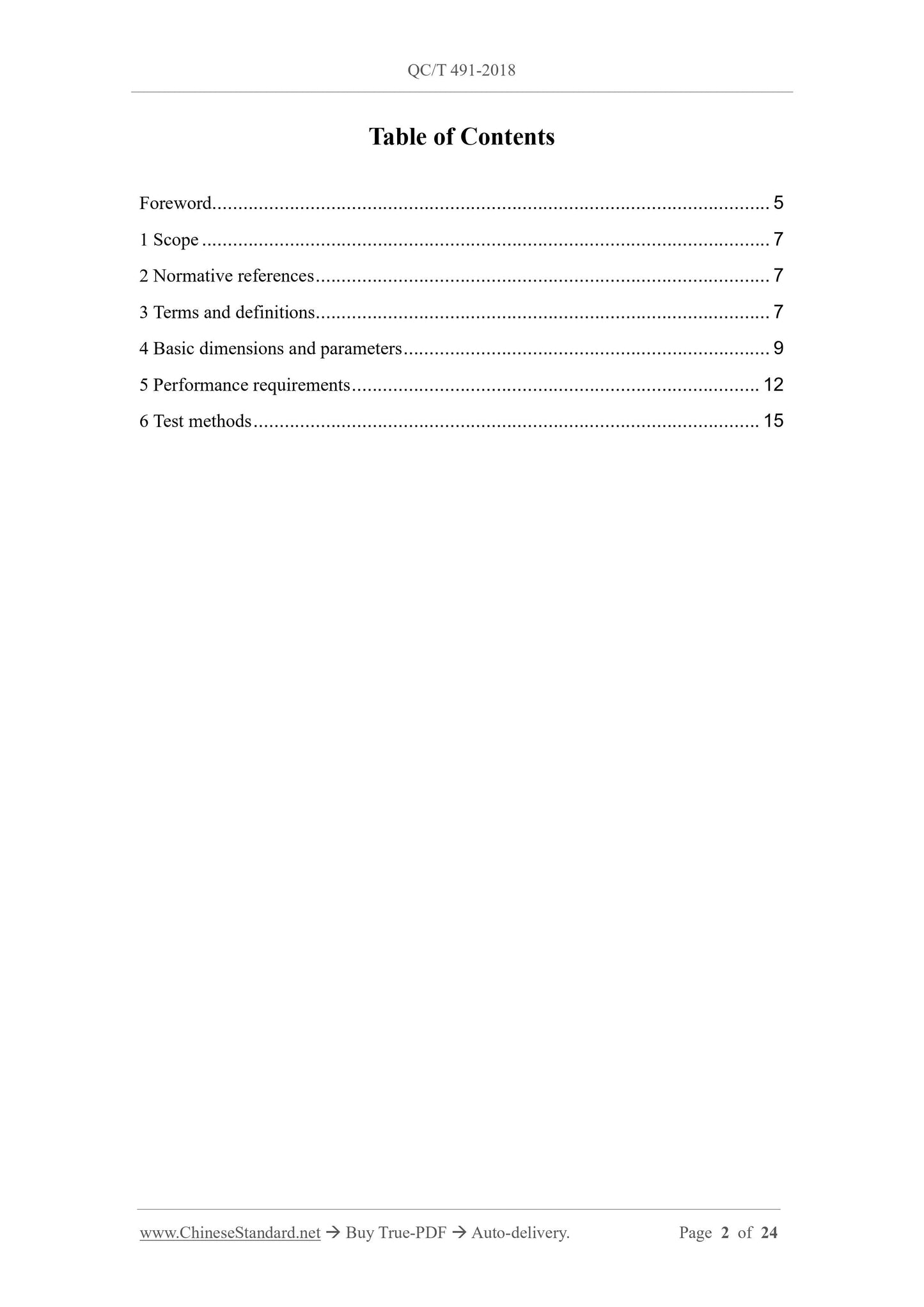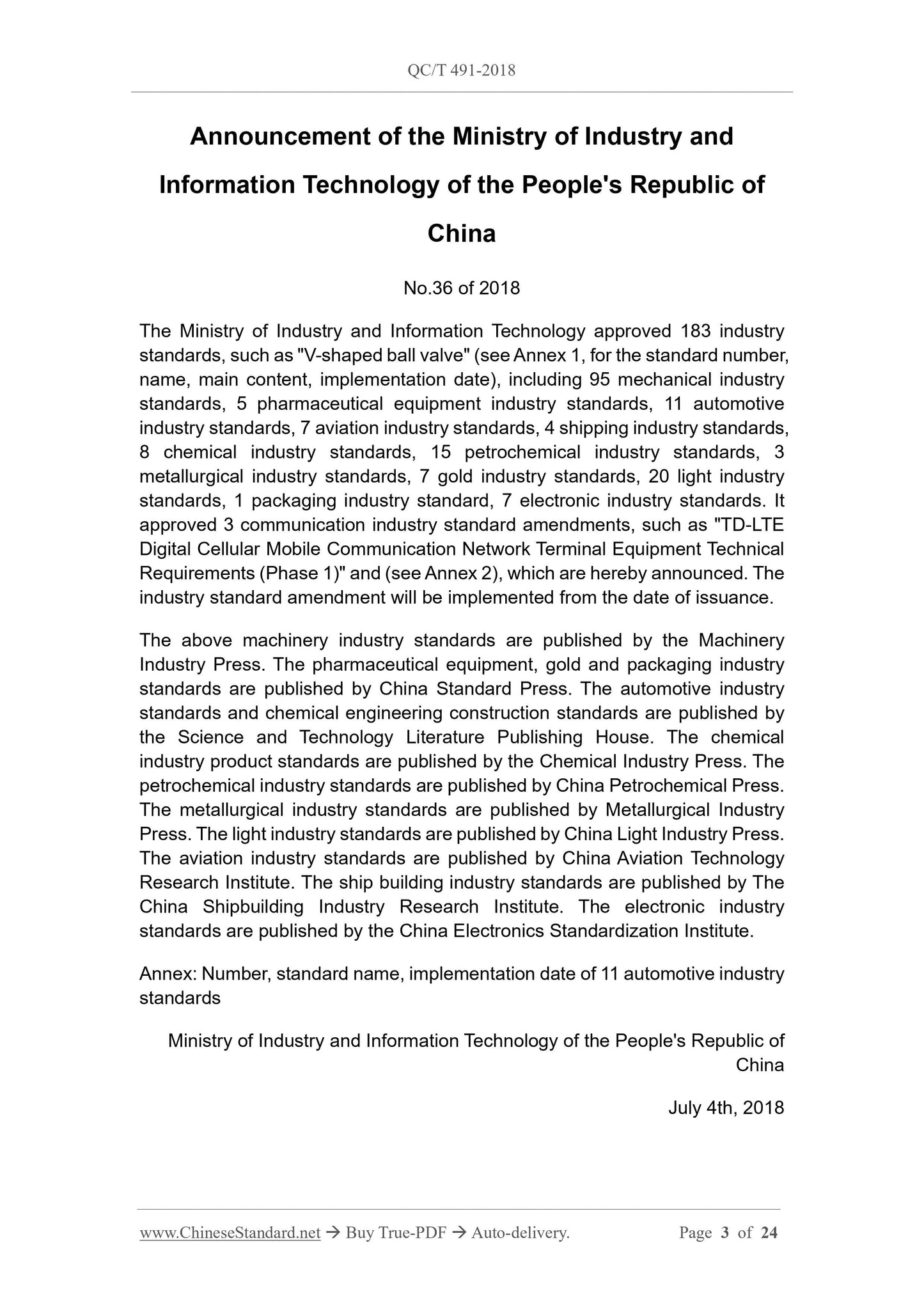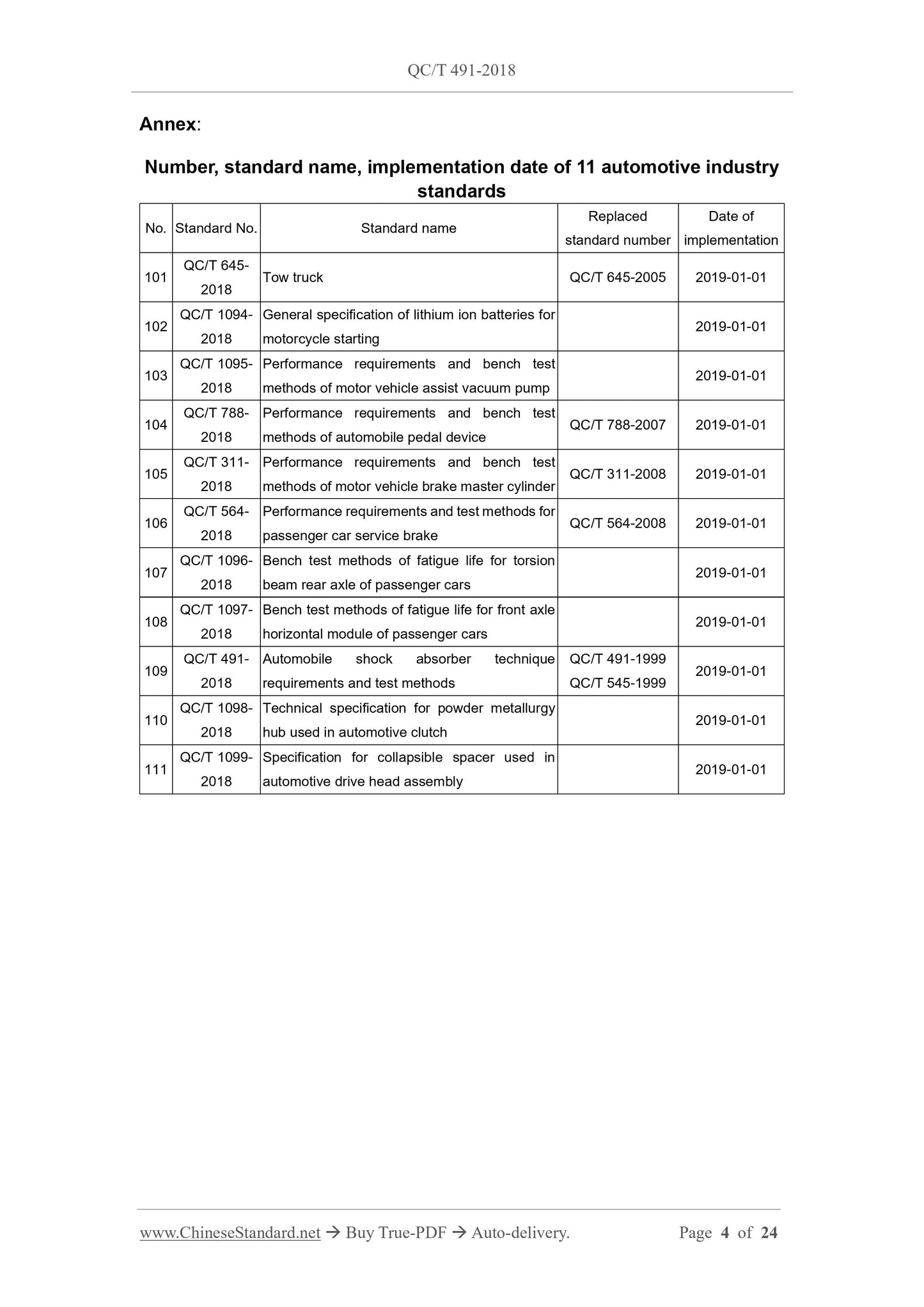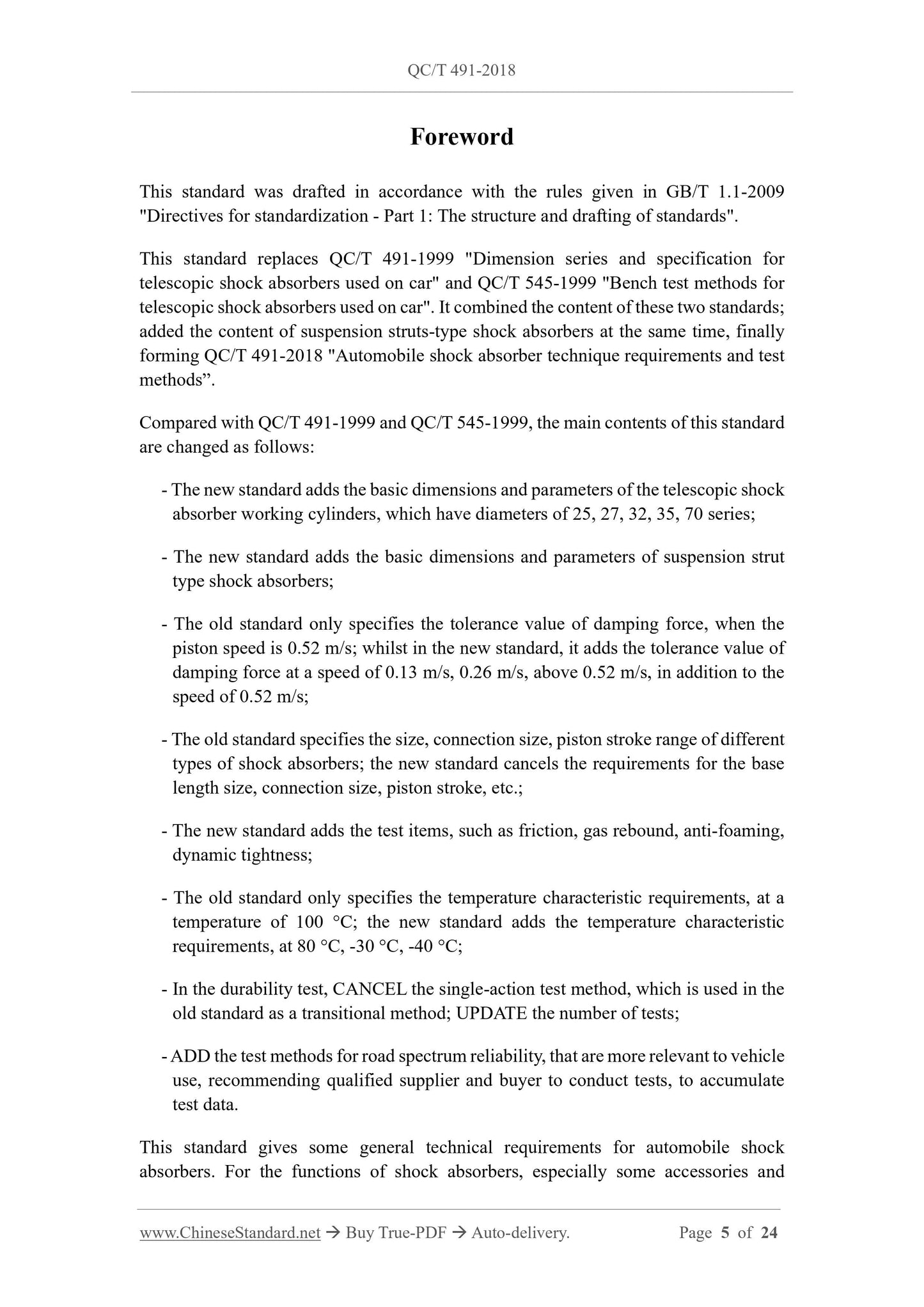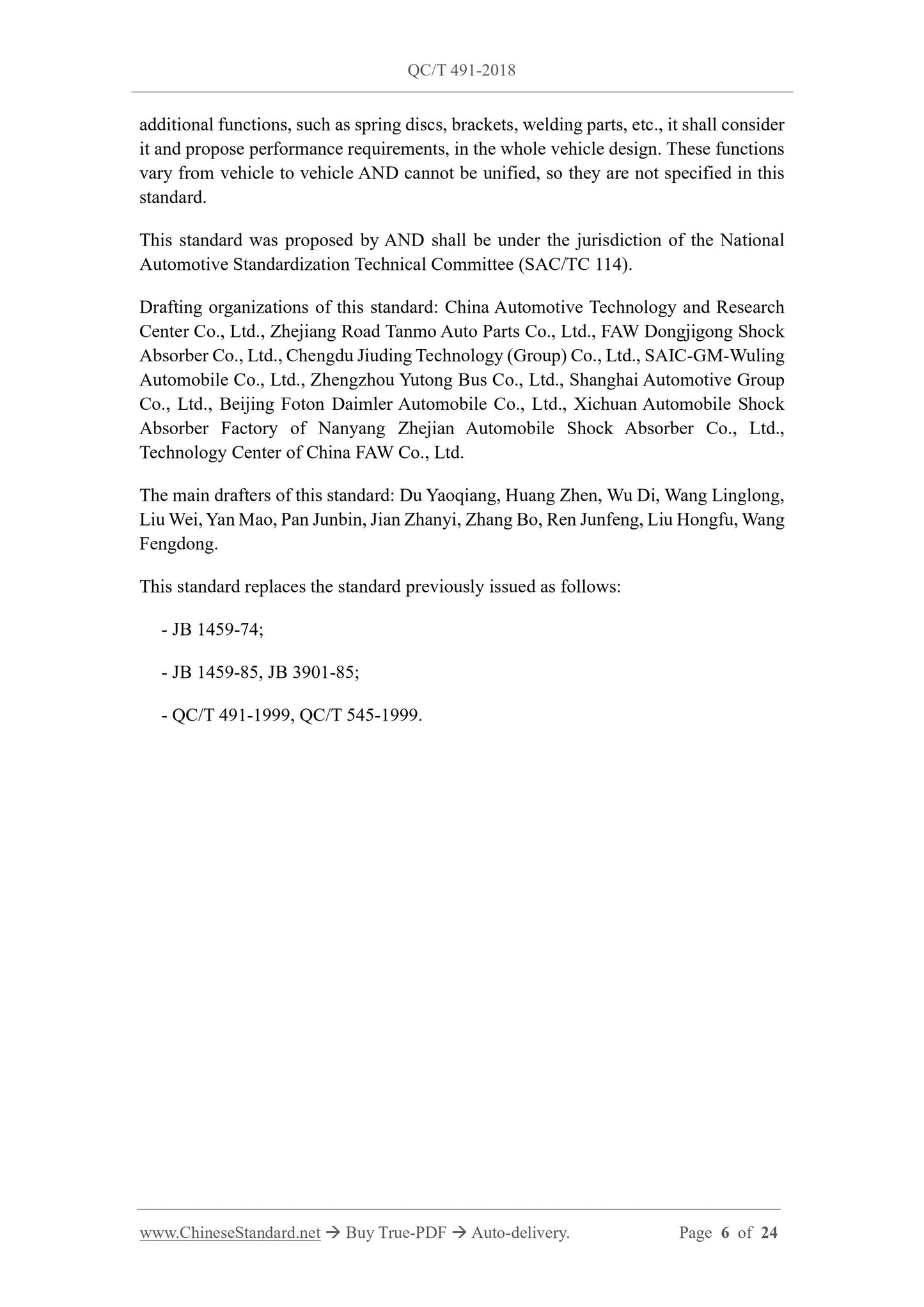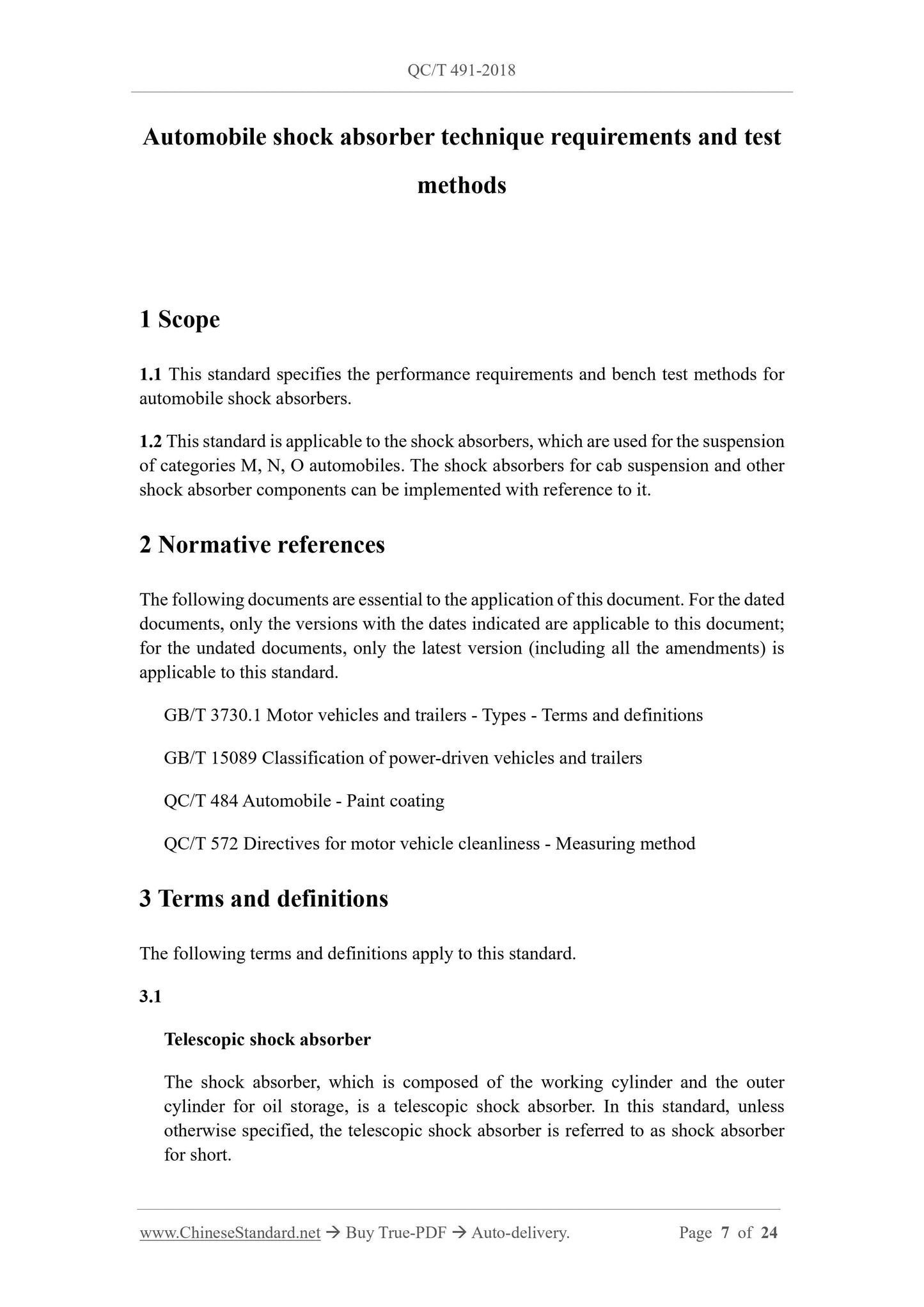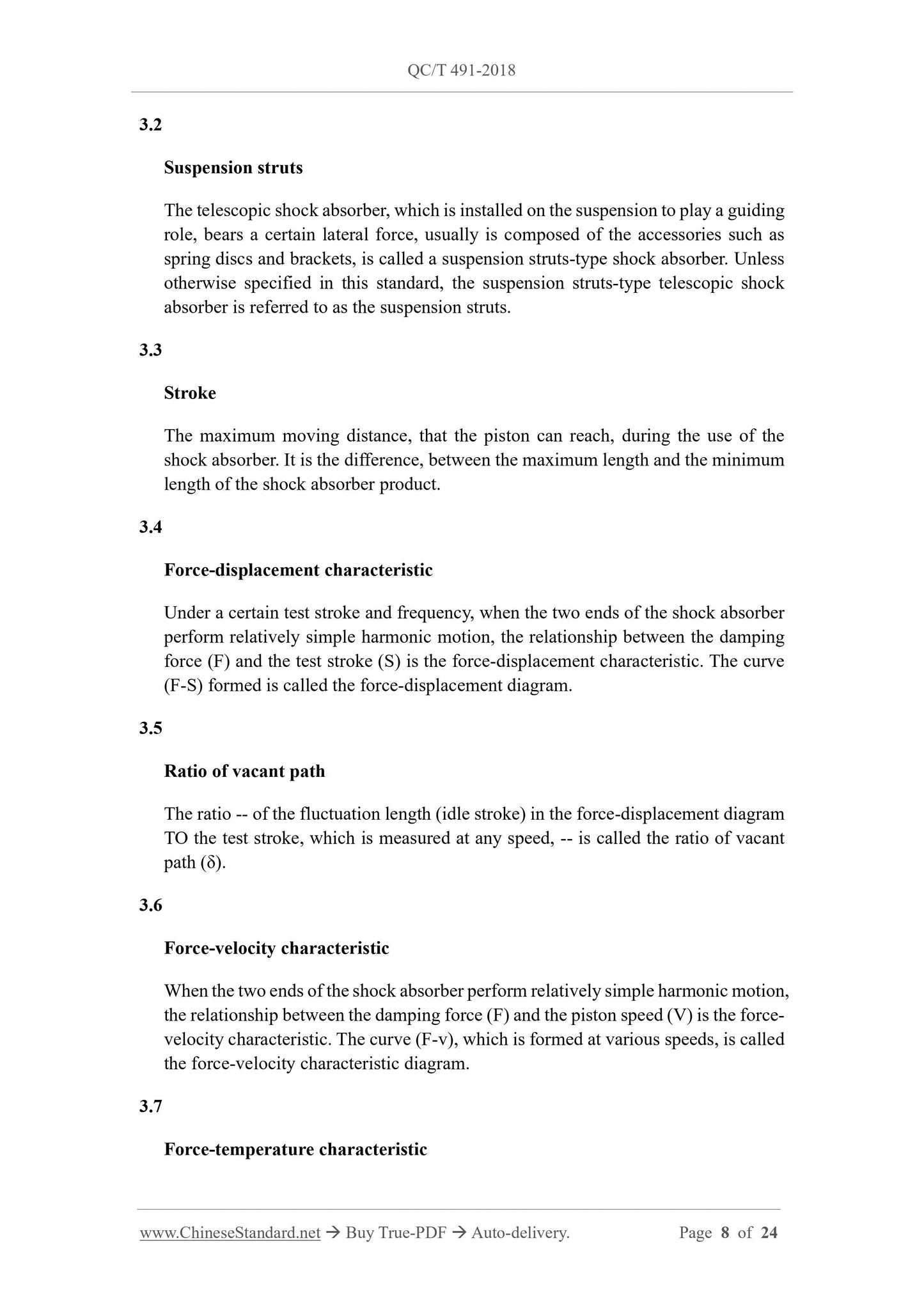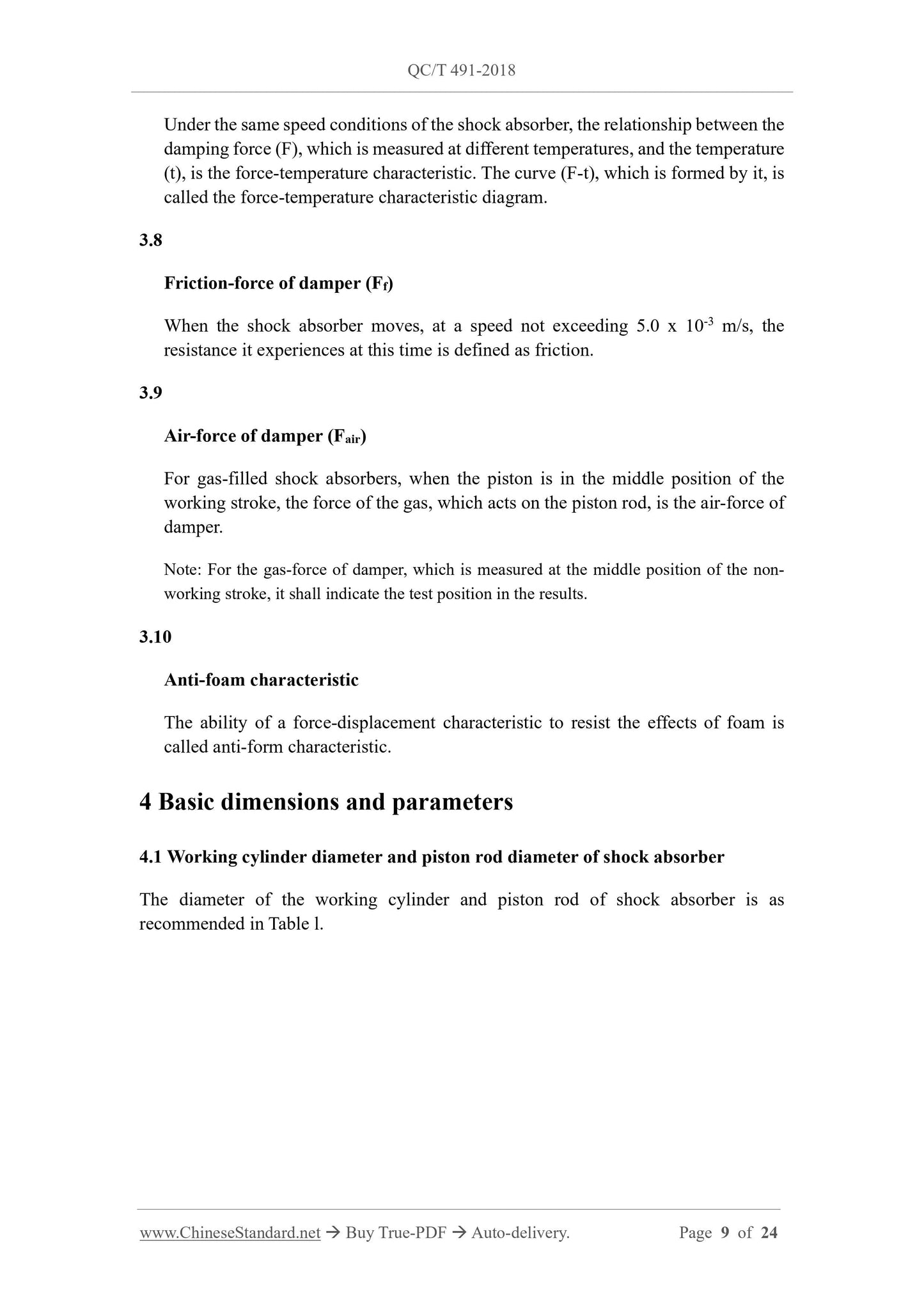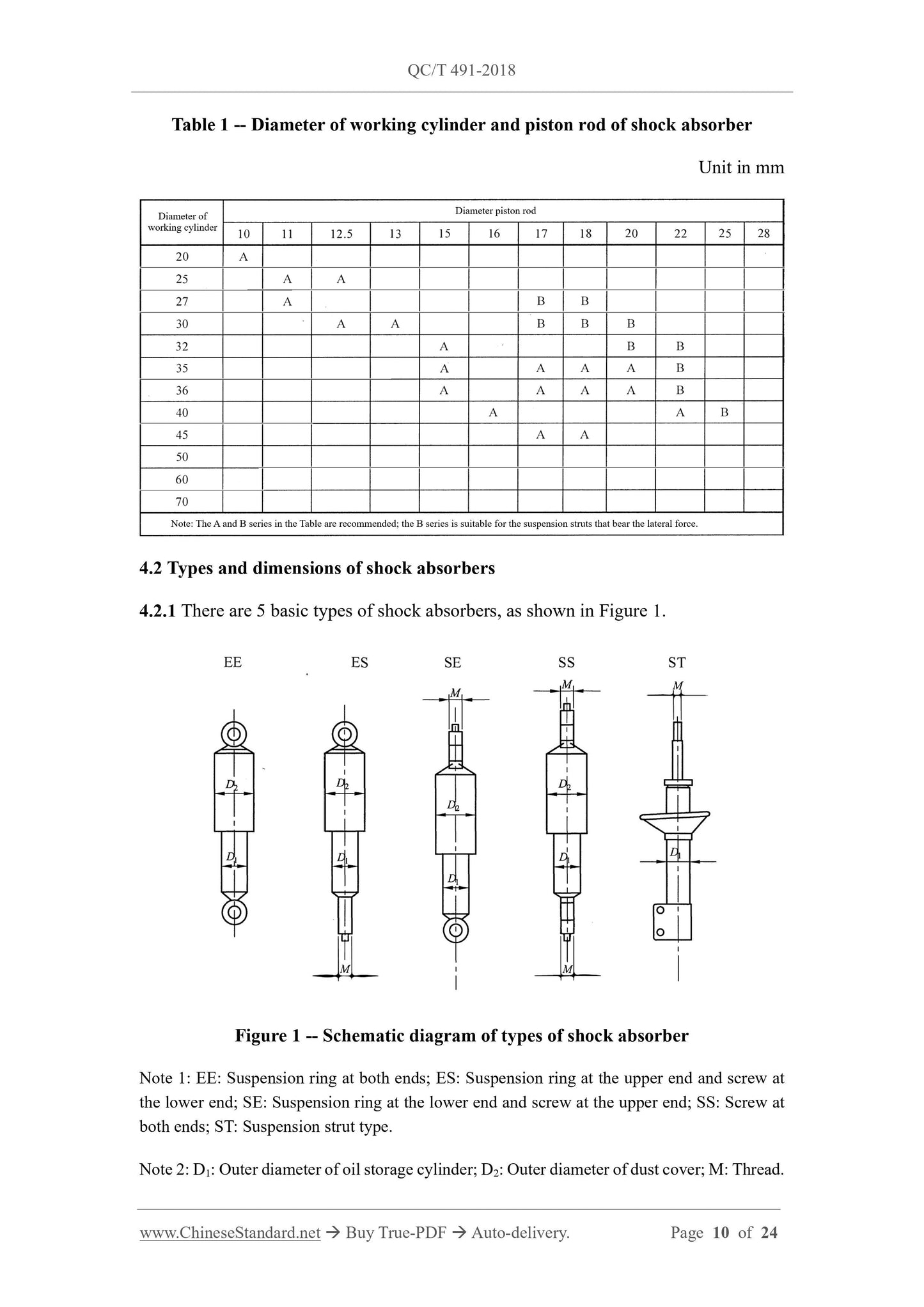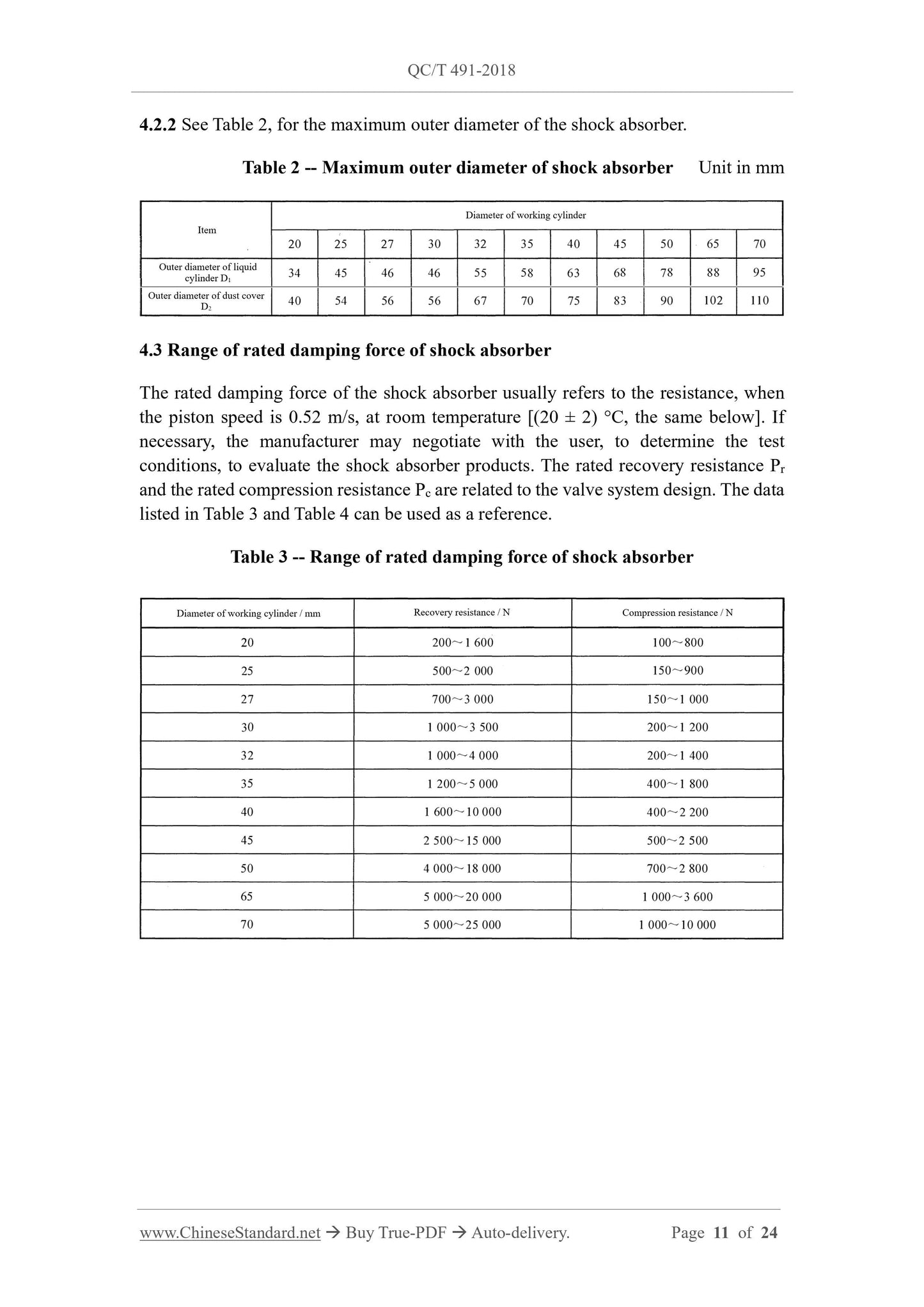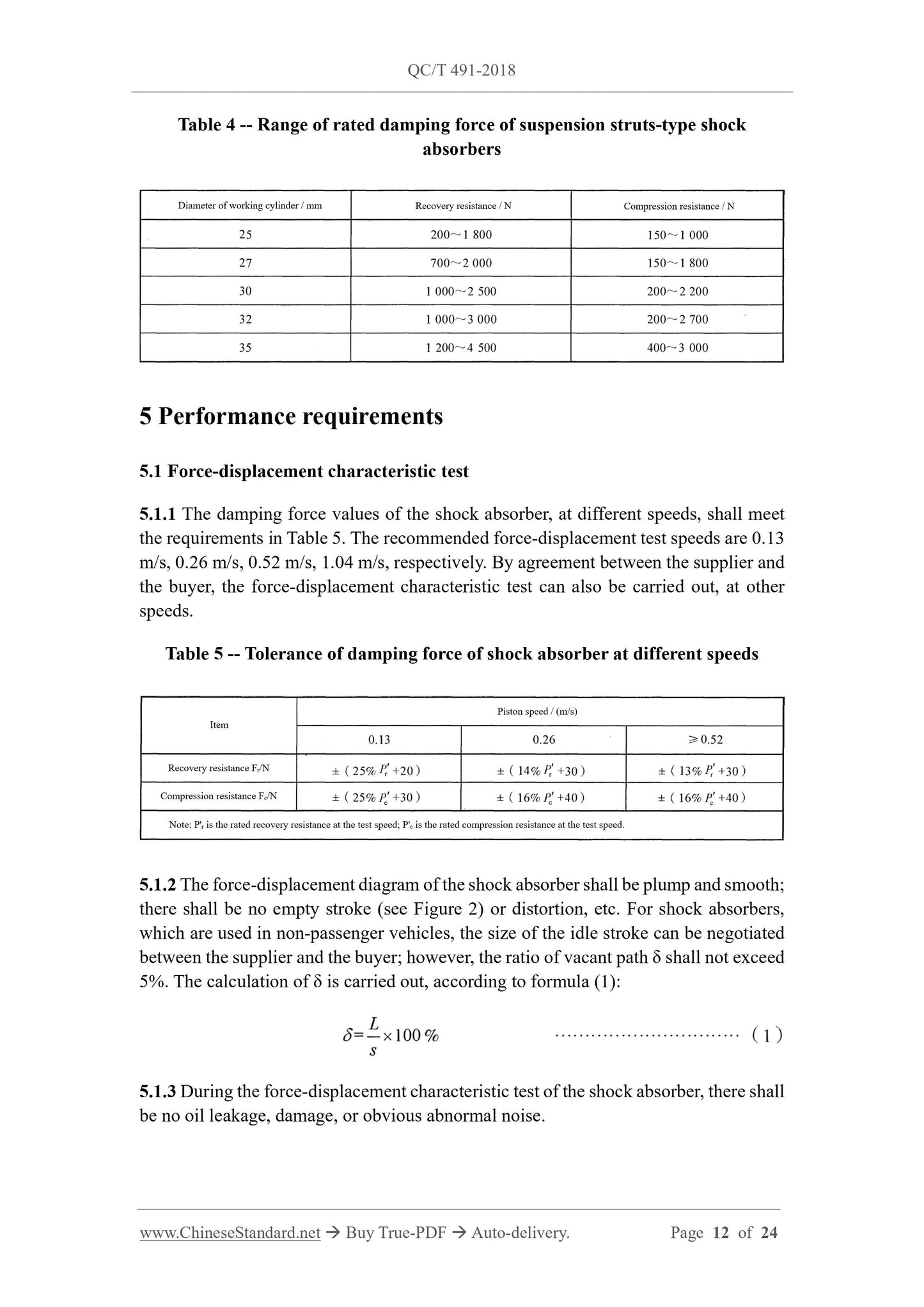1
/
of
12
www.ChineseStandard.us -- Field Test Asia Pte. Ltd.
QC/T 491-2018 English PDF (QC/T491-2018)
QC/T 491-2018 English PDF (QC/T491-2018)
Regular price
$235.00
Regular price
Sale price
$235.00
Unit price
/
per
Shipping calculated at checkout.
Couldn't load pickup availability
QC/T 491-2018: Automobile shock absorber technique requirements and test methods
Delivery: 9 seconds. Download (and Email) true-PDF + Invoice.Get Quotation: Click QC/T 491-2018 (Self-service in 1-minute)
Newer / historical versions: QC/T 491-2018
Preview True-PDF
Scope
1.1 This standard specifies the performance requirements and bench test methods forautomobile shock absorbers.
1.2 This standard is applicable to the shock absorbers, which are used for the suspension
of categories M, N, O automobiles. The shock absorbers for cab suspension and other
shock absorber components can be implemented with reference to it.
Basic Data
| Standard ID | QC/T 491-2018 (QC/T491-2018) |
| Description (Translated English) | Automobile shock absorber technique requirements and test methods |
| Sector / Industry | Automobile and Vehicle Industry Standard (Recommended) |
| Classification of Chinese Standard | T20 |
| Word Count Estimation | 17,195 |
| Date of Issue | 2018-07-04 |
| Date of Implementation | 2019-01-01 |
| Older Standard (superseded by this standard) | QC/T 491-1999; QC/T 545-1999 |
| Regulation (derived from) | Ministry of Industry and Information Technology Announcement No.36 of 2018 |
| Issuing agency(ies) | Ministry of Industry and Information Technology |
| Summary | This standard specifies the performance requirements of the vehicle damper and the bench test method. This standard is applicable to shock absorbers for M, N, and O type automotive suspensions. Shock absorbers for cab suspension and other shock absorber components can be referred to. |
Share
